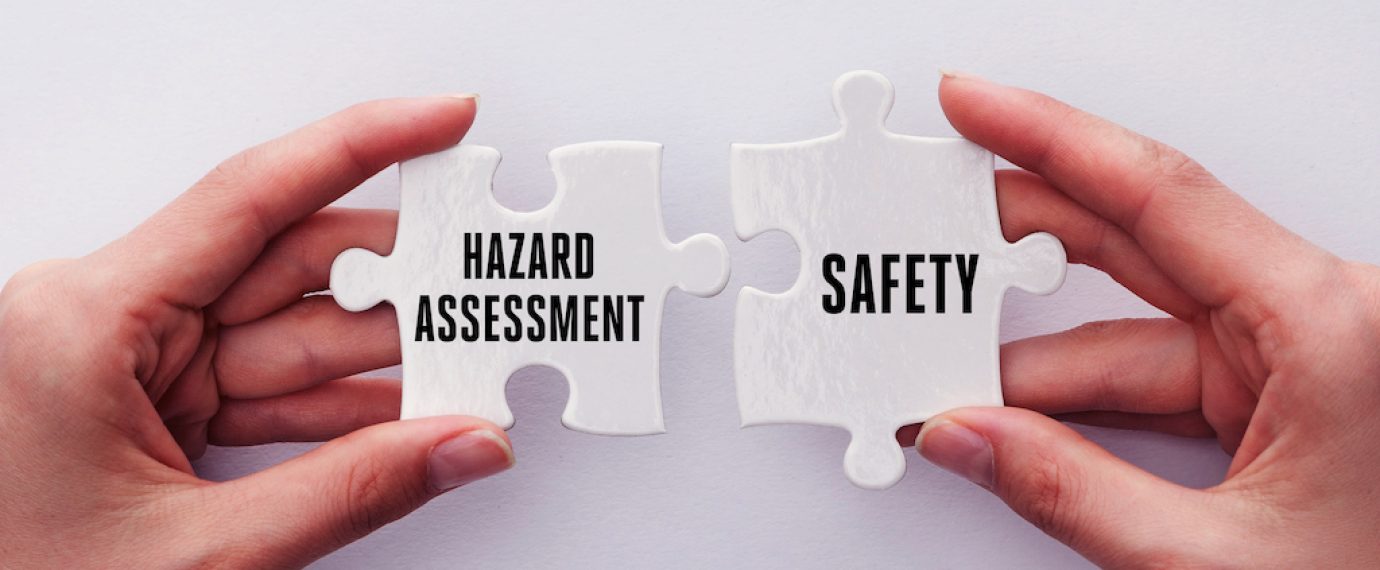Do you know what hazards are present in your facility? More importantly, do you know what controls are in place to mitigate those hazards? Identifying workplace hazards is a critical step in developing a comprehensive safety and health program. A hazard assessment is a simple document that lists the potential hazards of a specific task. The hazard assessment may also identify any established controls pertaining to the specific hazards. Listing the controls may assist in monitoring the effectiveness of reducing the potential risk to an acceptable level. The hazard assessment form may be simple, but identifying all of the hazards and controls can be challenging.
How to Complete a Hazard Assessment
There are many different titles for hazard assessment, such as Job Hazard Assessment, Safety Hazard Analysis, Risk Assessment, What-If Analysis, and many more. When determining what hazard assessment form to utilize, it is important to know that there is no universal or standardized form. There are multiple styles of assessments available, and the best one is up to the user.
Completing the assessments will consist of collecting, interpreting, and reviewing information from various resources. Those resources include safety data sheets, employee interviews, observations, incident investigations, incident trends, operating manuals, safety programs, and safety site inspections.
The first step in completing a hazard assessment is to develop a list of jobs in the workplace. These typically will include production-related jobs but may also include machine-specific and non-routine tasks. When considering what tasks to complete first, it may help to look at incident records to identify trends or high-risk areas. Once the jobs are listed, they can be broken down into specific tasks. Depending on the complexity, the assessment may consist of an entire job or a specific task.
The next step is to identify the already known information of the task. This may include reviewing any chemical Safety Data Sheets, existing work instructions, incident investigations, equipment user manuals, training materials, or applicable regulatory information from organizations such as Occupational Safety and Health Administration (OSHA), National Institute for Occupational Safety and Health (NIOSH), Centers for Disease Control and Prevention (CDC), and the American National Standards Institute (ANSI).
Once known hazards have been identified, it is time to dig a bit deeper into the process. This would be the time to observe the process, interview employees or subject matter experts. Observing the process and conducting interviews will not only confirm the already known hazards, but might also identify additional hazards for the specific task. Be sure to note any potential emergency or non-routine situations that may create hazards such as chemical spills, power outages, fires, and medical response.
The last step is to assess and understand the potential types of incidents for each identified hazard. Understanding the potential incidents will assist in establishing effective mitigation controls. The hierarchy control of hazards can be utilized when determining what type of control(s) to implement. Once controls are established, it is important to reassess the task to identify any residual risk. Additional controls may be required if the residual risk is too great.
When To Complete Hazard Assessments
Hazard Assessments should be completed when there is a new job, task, or process. The assessments should be reviewed and possibly updated whenever there are changes to the process, incidents, identification of ineffective controls, or new hazards.
Benefits
There are many benefits to completing a comprehensive hazard assessment. Those benefits may include establishing or sustaining compliance, reduction of incidents, and hazard abatement. While completing hazard assessments, the participants may also identify other production-related issues such as quality, environmental, and even efficiency.
Under the OSHA Act of 1970’s General Duty Clause Section 5, each employer must provide employees a place of employment, which is free of any recognized hazards that are likely to cause severe injury or a fatality. The hazard assessment may also assist in developing specific programs, safety rules, and training materials for various topics such as personal protective equipment, hazard communication, and lockout/tagout. Additionally, the hazard assessment may illuminate the need for employee exposure monitoring in areas such as noise and hazardous chemicals.
Summary
Recognizing the need to complete or review your hazard assessments is an important step to prevent injuries in the workplace. Completing a hazard assessment may seem complex, but establishing a system to effectively communicate potential hazards and controls will not only increase your site’s compliance but may also reduce injuries.
Contact U.S. Compliance for assistance or if you are interested in completing, refreshing, or auditing your hazard assessments.



